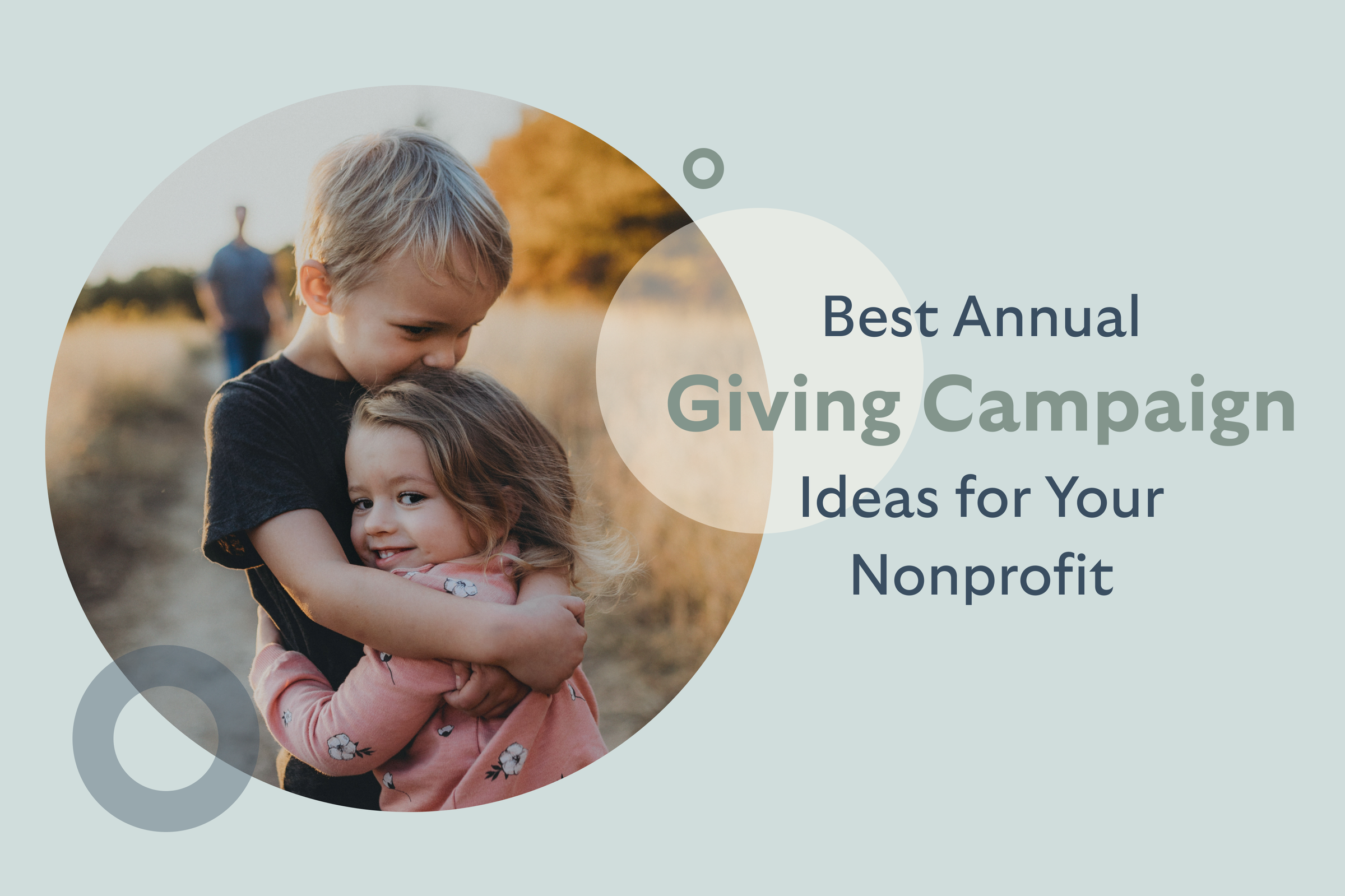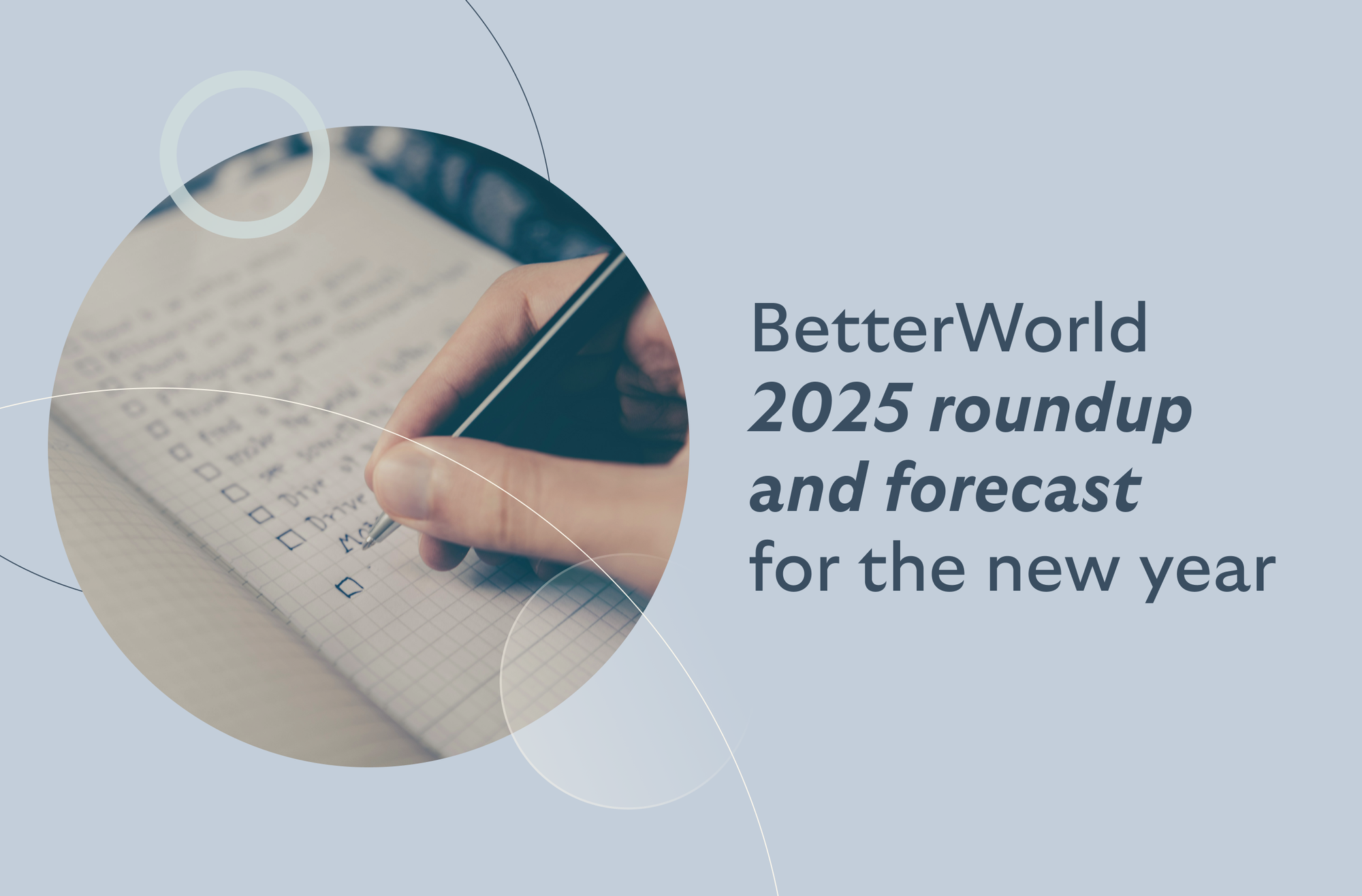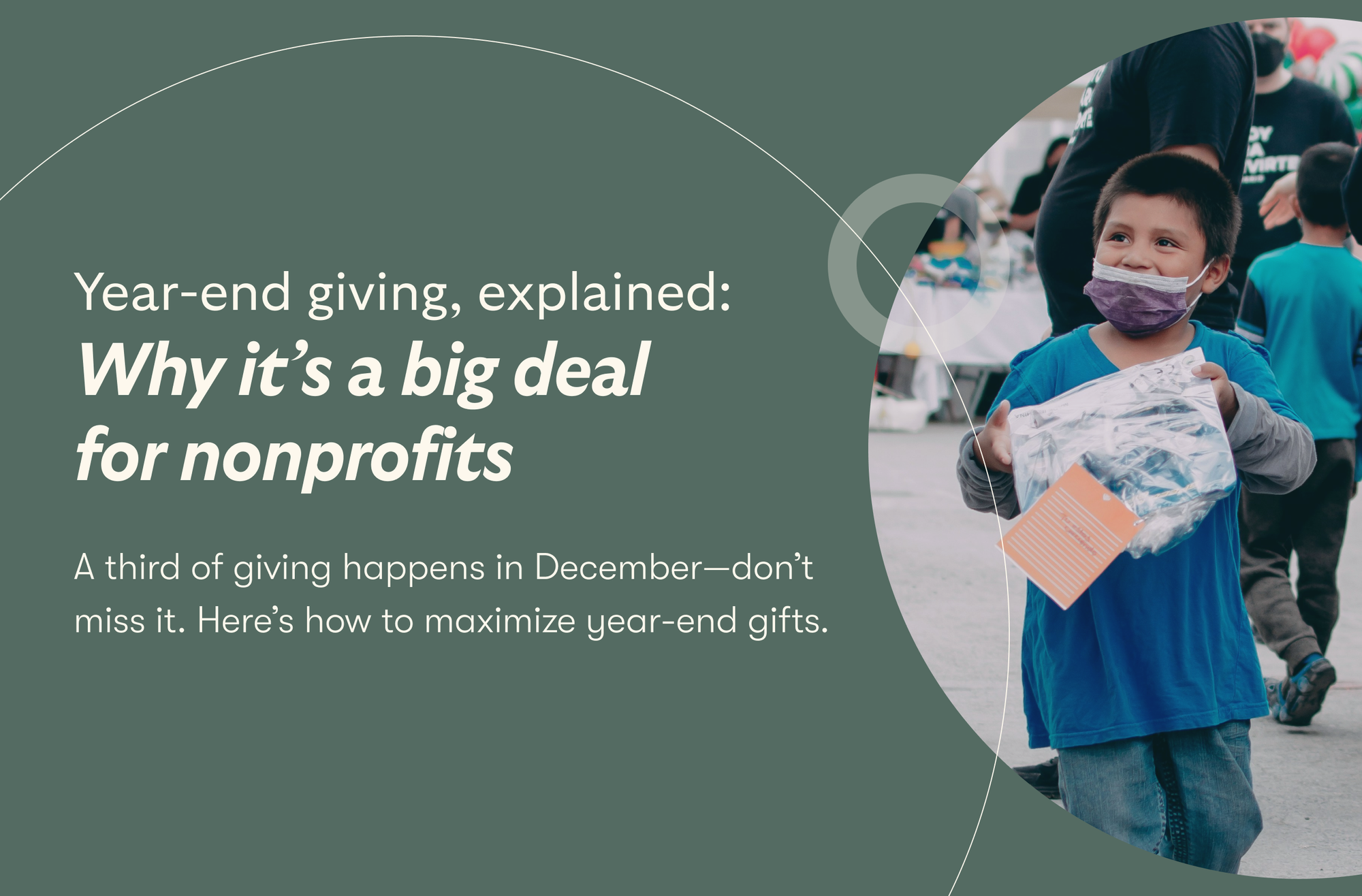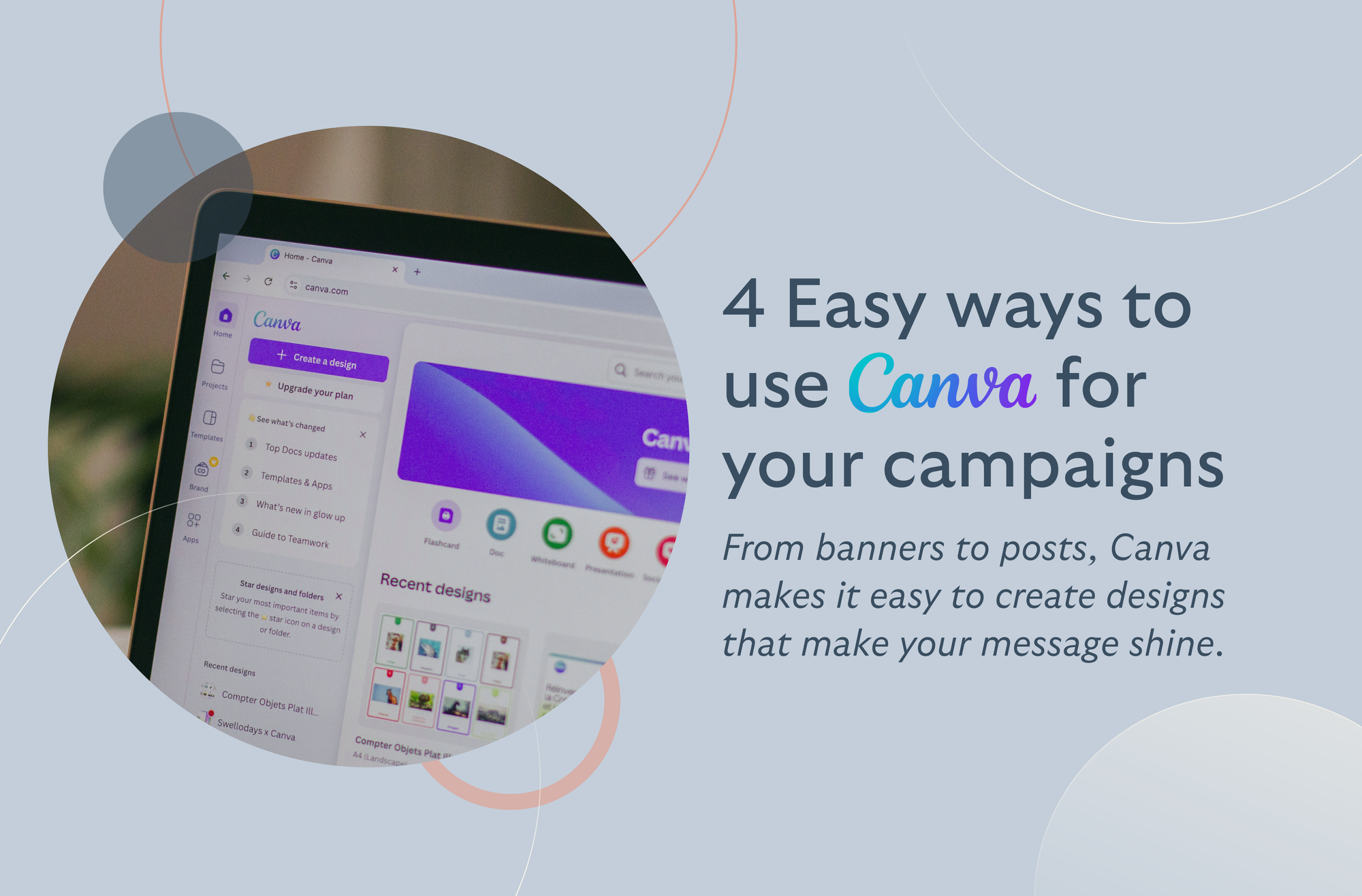Select and customize the fundraising method best suited for your organization
BetterWorld seamlessly integrates with both online and in-person auctions
Impress donors with creative raffle items and elegant online raffles
Create attractive donation pages that maximize donor impact and boost online giving
Best Annual Giving Campaign Ideas for Your Nonprofit
By Colin Hunter

The annual giving season can feel like the big finale of the year for nonprofits. This is the time when donors tend to open their hearts—and their wallets—the most. Even smaller nonprofits can see a big boost during this period, which helps them secure the funds they need for the year ahead.
In fact, 30% of all annual giving happens in December, and about 10% of that comes in just the last three days of the year. (Source)
That’s why nonprofit fundraising is so important during this time. If you want to make the most of the giving season, having some strong annual giving campaign ideas in place can really help. You don’t want to miss out on this key opportunity.
Let’s go through some year-end fundraising ideas that can set your nonprofit up for success.
Section 1: Define Your Campaign's Objectives
The first step in ensuring the success of your annual giving campaign is defining its objective. Outlining clearly what you aim to achieve gives your nonprofit a sense of direction and purpose.
Set Clear, Measurable Goals
For any annual giving campaign, setting clear goals is essential, but those goals should also follow the SMART framework.
This means they should be Specific, Measurable, Attainable, Relevant, and Time-bound. Rather than just aiming to “raise more money,” set a target, like raising $50,000 by the end of the campaign.
A goal like this is specific and gives your team something measurable to track throughout the campaign.
A SMART goal also ensures that you’re realistic. For example, setting a goal to increase donations by 50% might not be attainable if your nonprofit hasn't grown its donor base significantly in the past few years.
Using the SMART method, you can set deadlines and check progress with time-bound milestones, like reaching 30% of your fundraising goal by mid-December.
Identify Your Target Audience
Understanding your audience is just as important as setting SMART goals.
The first thing to focus on is looking at who has supported your cause in the past. Your donor database is a goldmine of information about who is likely to give again. Start by examining past donors, including how often they’ve contributed and the size of their gifts. If you haven’t already, consider segmenting your database under “new, established, lapsed, and prospective. This will allow you to easily identify opportunities with current and potential donors for this campaign and those following.
Once you’ve identified your regular donors, explore ways to expand your audience.
Nonprofits should explore demographic factors to understand their audience better. Age, location, and interests can tell you much about who will most likely contribute.
For instance, older supporters might prefer donating to established programs, while younger donors may lean toward specific projects that align with their values, such as sustainability or social justice.
Using demographic insights and online tools, like Google Analytics or social media insights, can also help you discover trends about who is visiting your website and engaging with your posts.
It helps ensure that your year-end fundraising ideas reach people who are already engaged with your mission and those who are new to it.
For more insights, check our detailed guide, The Comprehensive Guide To Year-End Giving To Nonprofits.
Section 2: Choose Creative Themes for Campaigns
Themes help tie your campaign to specific causes, seasons, or events, which can increase emotional connections and inspire giving.
Seasonal Themes
Using seasonal themes can make your campaign feel timely and relevant. Here are three annual giving themes ideas that fit perfectly with the end-of-year spirit:
- Holiday Giving: As the holiday season approaches, many people are in a giving mindset. Launching a campaign focused on holiday generosity can inspire donations. You can frame the campaign around gifting donations on behalf of loved ones, helping families in need during the holidays, or supporting local initiatives.
- Giving Tuesday: This globally recognized day of giving, which follows Thanksgiving, is a natural fit for year-end fundraising ideas. Many nonprofits plan special events or 24-hour fundraising pushes to capitalize on the momentum of Giving Tuesday, often reaching out to new and returning donors.
- New Year, New Impact: Another effective theme is tying your campaign to starting fresh in the new year. This could focus on encouraging donors to make their first gift of the year or renewing annual commitments to support causes they care about.
Cause-Specific Themes
Incorporating cause-specific themes into your annual giving campaigns can motivate donors who are passionate about particular issues. Here are three relevant themes:
- Education Support: A theme centered on education, such as funding scholarships or literacy programs, connects with donors who value learning and youth development. This cause-specific approach can be a powerful year-end fundraising idea.
- Healthcare Initiatives: A campaign tied to healthcare, such as supporting hospitals or research programs, can be especially effective at year-end. This is a time when donors reflect on causes they care about and look for ways to make a meaningful impact.
- Disaster Relief: Many nonprofits use the year-end giving season to raise funds for ongoing relief efforts related to natural disasters or humanitarian crises. Tying your campaign to this theme can engage donors who are moved by the urgency of these causes.
While these are popular causes, they may not be in line with your organization's objectives. Forcing a theme to fit your mission can lead to mission drift, so be sure that your cause-specific theme is unwaveringly mission-centric. Your donors will appreciate your focus and dedication!
Section 3: Use Engaging Fundraising Strategies
You need creative and engaging ideas that drive meaningful results to succeed in your annual giving campaign. To help you get started, we’ve gathered some tried-and-tested end-of-year giving campaign ideas that will make an impact.
1. Peer-to-Peer Fundraising
Peer-to-peer fundraising (P2P) is a dynamic strategy where your supporters raise money on behalf of your nonprofit by using their personal networks. Instead of simply asking donors for a direct contribution, you empower them to become fundraisers themselves.
It’s a smart approach for annual giving campaigns because people are more likely to donate when the request comes from someone they know. In fact, 88% of people trust recommendations from people they know more than any other form of marketing. (Source)
To use P2P in your year-end fundraising ideas, encourage your most active supporters to set up individual fundraising pages. These pages are shared with their friends, family, and colleagues, driving donations through personal connections.
When should you start? The best time to introduce P2P is around mid-year, giving your campaign enough time to build momentum before the end-of-year push. However, it's especially powerful during the final quarter of the year.
To make things easier for your nonprofit and supporters, you can use BetterWorld’s free peer-to-peer fundraising tool. You can start accepting donations within minutes.
2. Matching Gifts and Corporate Partnerships
Matching gifts provide an excellent way to double, or even triple, the impact of donations during your annual giving campaign.
Mentioning matching gifts in your appeals can boost response rates by 71% and increase the average donation by 51%. (Source)
To incorporate matching gifts, promote them in your emails, social media posts, and donation forms. You can even use tools that allow donors to check if their employer offers a matching program.
Corporate partnerships go beyond matching gifts. They involve collaborating with businesses to support your campaign through sponsorships, event funding, or large donations.
Companies often have Corporate Social Responsibility (CSR) programs that align with nonprofit missions. These partnerships benefit both sides: nonprofits receive financial support, and businesses improve their brand reputation by committing to social causes.
Promoting matching gifts and corporate partnerships is best at the beginning of your annual campaign, but these strategies become especially impactful in the final quarter.
3. Monthly Giving Programs
Monthly giving programs are a great way for nonprofits to build a reliable and consistent stream of donations throughout the year.
Remember, monthly donors are far more likely to give more than one-time contributors, which can be crucial for long-term planning and stability.
To integrate monthly giving into your annual giving campaign ideas, start by promoting it as a way for supporters to contribute to your cause continuously. Highlight how small, recurring donations can have a big impact over time, and make it easy for donors to sign up for monthly contributions on your donation page.
During your year-end fundraising ideas, stress that monthly giving allows them to support your nonprofit beyond the holiday season, keeping their generosity active throughout the year.
The ideal time to introduce monthly giving is early in your annual campaign, but it becomes especially powerful at the end of the year.
Offer donors flexibility to keep donations flowing. BetterWorld’s donation software makes it simple to set up one-time, monthly, or even annual giving programs. With just a few clicks, donors can choose the option that works best for them, ensuring a steady stream of support for your cause.
Request a Free Demo Today!
4. Direct Mail Campaign
Direct mail fundraising is a classic but still highly effective way to reach donors directly. It allows nonprofits to connect with supporters by sending letters, postcards, or newsletters to their homes.
The average response rate for direct mail is 5.3%, significantly higher than digital methods like paid search (0.6%) or online display ads (0.2%). (Source)
To use direct mail effectively in your year-end fundraising ideas, start by segmenting your mailing list into groups like past donors, prospects, or high-engagement individuals.
Personalize your letters with donor-specific details, like their previous contributions, and make sure the appeal includes a clear, compelling story about your mission. You can also include a QR code that links to your BetterWorld donation page, blending online and offline fundraising.
When should you launch your direct mail campaign? Ideally, you should start planning several months in advance. For end-of-year giving campaigns, aim to get them into homes by early November to capitalize on the holiday spirit and tax-related giving before December 31.
5. Text-to-Give Campaign
Text-to-give campaigns are simple yet powerful tools for nonprofits. They allow donors to give instantly through their mobile devices. With just a text message, supporters can make donations by sending a specific keyword to a designated number.
This year-end fundraising idea is ideal, where speed and simplicity are key.
Donors can pay in two ways:
A. Mobile Phone Bill: After sending a text with the campaign keyword, donors can have a defined amount added to their mobile phone bill.
B. Mobile Donation Page: After texting the keyword, donors receive an instant message with a link to a mobile-friendly donation page associated with your campaign. They can then complete the donation online.
To implement text-to-give in your annual campaign, share a keyword (like "DONATE or HELP") and a short code or phone number through your website, emails, and social media.
The best time to start using text-to-give is early in your annual giving campaign. However, it shines brightest during year-end giving, especially in December when donors look for easy ways to contribute before the year ends.
6. Fund a Need Campaign
A "Fund a Need" campaign is a targeted way to raise money for a specific cause or project within your nonprofit. Unlike general fundraising efforts, this approach asks donors to support one clear, well-defined need. It could be buying new equipment, funding a scholarship, or supporting a special project.
The goal is to offer supporters a direct way to make an impact, which often leads to more engaged and motivated donors.
To incorporate a Fund a Need campaign into your annual giving campaign ideas, focus on highlighting the urgency and significance of the project. Clearly communicate why this specific need matters and how donor contributions will directly support it.
Visual storytelling is key here. Sharing before-and-after scenarios or impact stories can help donors understand the difference their gifts will make. Additionally, using progress trackers, like a donation thermometer, helps keep supporters excited and motivated as they see their contributions bringing the campaign closer to its goal.
Use this method in the final months when donors are more likely to support causes that offer immediate, measurable impact.
Try BetterWorld’s robust suite of charity & nonprofit fundraising tools for FREE!
Section 4: Use Digital Platforms
Nonprofits should use digital platforms in annual giving campaign ideas to reach a wider audience, engage supporters in real-time, and streamline the donation process.
Digital tools allow nonprofits to connect with donors in more personalized ways, whether through social media, email, or online donation platforms. With people increasingly spending time online, digital campaigns can increase visibility, track success, and boost donations, especially during key fundraising periods like the year-end.
Importance of Social Media in Fundraising
Let’s look at some of the key benefits of social media in an annual giving campaign.
- Increased Visibility: Social media allows nonprofits to reach a larger audience, and with targeted ads, you can reach the right audience within minutes. Platforms like Instagram and Twitter can also drive significant traffic to donation pages, increasing overall engagement with your campaign.
- Cost-Effective Outreach: Social media is a low-cost way to engage supporters, which makes it ideal for nonprofits with limited budgets. It costs significantly less than traditional advertising.
- Boosts Donor Engagement: 55% of people who engage with nonprofits on social media end up taking some kind of action, whether that’s donating, volunteering, or attending events. (Source) Active social media strategies keep your nonprofit at the forefront and build stronger connections with your audience.
- Facilitates Peer-to-Peer Fundraising: Social media makes it easy for supporters to share your message and fundraise on your behalf. In peer-to-peer campaigns, around 15-18% of donations are referred directly through social platforms like Facebook. (Source)
- Real-Time Interaction: Platforms like Facebook Live and Instagram stories allow you to showcase your work as it happens. This kind of real-time content is engaging, with 57% of people who watch nonprofit videos going on to donate after viewing. (Source)
Year-End Email Campaign
Over a quarter of nonprofit donors worldwide, specifically 26%, say that email is the most motivating communication method for making a donation. (Source)
What is it?
A year-end email campaign is key in boosting donations during the holiday season. It’s an organized sequence of emails sent to engage your supporters and remind them to give before the year ends.
This series of emails builds urgency as the year closes. Each email should include a clear message about the impact of donations can be either through short stories or photos, along with a strong call to action, such as a link to your donation page.
How to Use It in Your Annual Giving Campaign?
Incorporating this campaign into your annual giving strategy is a great way to re-engage past donors and attract new ones.
Start with a soft launch in late November or early December, followed by targeted messages as the holidays approach. To make the most of year-end fundraising, highlight matching gift opportunities or share a story that tugs at heartstrings, encouraging people to take action.
The best time to send these emails is between Thanksgiving and the last week of December, with the final email going out on December 31. This last push can often be your most successful, as nearly 10% of annual donations happen in the last three days of the year. (Source)
Crowdfunding Options
Crowdfunding is another effective use of digital platforms to connect with a wide audience online. It allows individuals and nonprofits to gather small donations from a large group of people through platforms like BetterWorld.
About 41% of people have contributed to crowdfunding campaigns, especially for personal causes. (Source)
What is it?
Crowdfunding lets you create a campaign page where anyone can donate to support your cause. It’s often used for personal emergencies, but nonprofits can use it to expand their reach.
Through platforms, you can share stories, update donors, and make it easy for people to contribute.
How to Use It in Your Annual Giving Campaign?
Share specific stories about your nonprofit’s impact. These crowdfunding platforms are particularly effective when you give regular updates and engage with your donors.
Crowdfunding works best when you use social media to spread the word and encourage your followers to share your campaign with their networks.
Whether you’re focusing on year-end fundraising ideas or trying to meet an annual goal, crowdfunding helps to gather support from a broad audience.
Set up a crowdfunding page using BetterWorld’s Free Crowdfunding Platform and start receiving donations within minutes!
Section 5: Personalize Donor Engagement
The success of any fundraising campaign depends highly on the personalization of donor engagement. Here are a few ways to approach it.
The Role of Storytelling in Annual Campaigns
Stories connect donors emotionally to your cause. For annual campaigns, this is especially important. Instead of focusing on what your organization accomplished, highlight the role of the donor.
For example, instead of saying, "We built homes for 50 families," say, "Your donation helped build homes for 50 families." This shift makes the donor feel directly responsible for the impact.
How to Do It:
- Use real stories from people impacted by donations. If you are running an annual giving campaign, share a family’s story that benefited from your program. Attach relevant stats like, “Because of supporters like you, we’ve reduced homelessness by 15% in the last year.”
- Share this through email campaigns, social media posts, or even short videos. Videos and images tend to be more engaging than text-only messages.
Building Relationships Through Updates and Thank-You's
Frequent, personalized updates and thank-you’s are simple yet highly effective for donor retention. A handwritten thank-you card or a personalized email can make a big difference.
For example, send a short message like, "Dear Sarah, because of your generosity, we were able to provide clean water to 200 children this month."
How to Do It:
- After the donation, send a personalized email or handwritten note that explains the direct impact of the contribution.
- Provide real-time updates throughout the year. For example, “Because of your support, we’ve reached 80% of our $50,000 goal!” This encourages further engagement and helps retain donors for your next year-end fundraising ideas.
Using Donor Data to Tailor Communication
Segmenting your donor base is key to personalization. Use donor data to target communication based on their interests or giving habits. For example, if a donor has a history of giving to environmental causes, send them updates specifically about your organization’s eco-projects.
How to Do It:
- Use your CRM to track donor preferences. For example, if a donor gave during last year’s end-of-year giving campaign, segment them into a group that receives tailored messaging like, “Your past support helped us clean up 100 miles of coastline this year. Would you consider helping again?”
- Group your donors based on factors like past donations, preferred communication methods (email, social media), and event attendance.
Section 6: Measure and Evaluate Success
Now that you've put in all the hard work, the final step is to take a moment and reflect on what went well and what didn’t. Here’s how you can assess and improve for the future.
Tracking Campaign Metrics
Tracking key metrics is critical to find the effectiveness of your annual giving campaign. The most important metrics are the donor retention rate, conversion rate, and return on investment (ROI).
The donor retention rate measures how many donors return year after year, with a 40-45% retention rate that is considered good for nonprofits. (Source)
ROI shows how much you’ve gained relative to what you spent on the campaign. For example, if you spent $1,000 and raised $5,000, your ROI would be 400%, which means you made four times what you invested.
Another key metric is donor engagement rate, which tracks how active and connected your donors are throughout the campaign. This can include interactions with your emails, social media posts, and website.
For instance, if 100 people received your email but only 30 clicked through to your donation page, your engagement rate would be 30%.
Analyzing Donor Feedback and Participation Rates
Donor feedback collected through surveys and analyzing participation rates provides valuable insight into your donors' experiences. For example, if you send out 200 surveys after the campaign and receive 50 responses, your participation rate is 25%.
It tells you how connected your donors feel to your organization and the campaign. It’s also a good idea to track which outreach channels (e.g., email vs. social media) resulted in the most donations.
This data helps you refine your approach for future year-end fundraising ideas.
Adjusting Strategies Based on Results
Once you've gathered and analyzed your data, it's time to adjust your strategy. Analyzing your data should lead to action.
If your donor retention is low or feedback suggests donors feel disconnected, consider adjusting your communication approach. For instance, if many donors stopped giving, you might introduce personalized messages or focus on stewardship to rebuild relationships.
Nonprofits that tweak their strategy based on past metrics often see better results in future campaigns. A good practice is to compare year-over-year donation growth and adjust tactics to improve on weak areas.
Make Annual Giving Easier with BetterWorld’s Free Tools
An annual giving campaign is surely a big task, especially when donations peak at the end of the year. It's not just about managing donations—it's about making the most of the season when people are more likely to give. That’s where BetterWorld steps in.
BetterWorld offers free nonprofit fundraising tools designed to simplify the process. Whether you're gathering donations in-person, online, or through a hybrid event, BetterWorld makes it easy to set up a campaign in under five minutes.
No need for complicated downloads or pre-registration—just create a link, share it, and you’re ready to go.
Over 100,000 nonprofits, organizations, and fundraisers have already chosen BetterWorld for their year-end fundraising ideas, and there's a reason for that: we provide nonprofit tools that are simple to use and effective in results.
From online donation platforms to automated payments, we’ve got you covered.
Key features:
- No ads cluttering your donation page
- Unlimited access to all tools
- No donor data ever sold
- Safe and secure platform
- Automated payments and receipts
And the best part? It’s 100% free, always. BetterWorld is here to help you succeed without hidden costs or fees for your annual giving campaign or any other fundraising effort.
Sign up today and see how easy it is to turn your annual giving campaign ideas into reality.

Join 105,000+ amazing nonprofits, organizations, and fundraisers on BetterWorld

Let our FREE fundraising tools help you raise more funds with less effort








